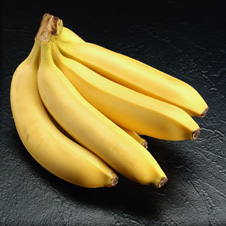Coffee as a Health Drink? Studies Find Some Benefits

Coffee is not usually thought of as health food, but a number of recent studies suggest that it can be a highly beneficial drink. Researchers have found strong evidence that coffee reduces the risk of several serious ailments, including diabetes, heart disease and cirrhosis of the liver.
Among them is a systematic review of studies published last year in The Journal of the American Medical Association, which concluded that habitual coffee consumption was consistently associated with a lower risk of Type 2 diabetes. Exactly why is not known, but the authors offered several explanations.
Coffee contains antioxidants that help control the cell damage that can contribute to the development of the disease. It is also a source of chlorogenic acid, which has been shown in animal experiments to reduce glucose concentrations.
Caffeine, perhaps coffee’s most famous component, seems to have little to do with it; studies that looked at decaffeinated coffee alone found the same degree of risk reduction.
Larger quantities of coffee seem to be especially helpful in diabetes prevention. In a report that combined statistical data from many studies, researchers found that people who drank four to six cups of coffee a day had a 28 percent reduced risk compared with people who drank two or fewer. Those who drank more than six had a 35 percent risk reduction.
Some studies show that cardiovascular risk also decreases with coffee consumption. Using data on more than 27,000 women ages 55 to 69 in the Iowa Women’s Health Study who were followed for 15 years, Norwegian researchers found that women who drank one to three cups a day reduced their risk of cardiovascular disease by 24 percent compared with those drinking no coffee at all.
But as the quantity increased, the benefit decreased. At more than six cups a day, the risk was not significantly reduced. Still, after controlling for age, smoking and alcohol consumption, women who drank one to five cups a day — caffeinated or decaffeinated — reduced their risk of death from all causes during the study by 15 to 19 percent compared with those who drank none.
The findings, which appeared in May in The American Journal of Clinical Nutrition, suggest that antioxidants in coffee may dampen inflammation, reducing the risk of disorders related to it, like cardiovascular disease. Several compounds in coffee may contribute to its antioxidant capacity, including phenols, volatile aroma compounds and oxazoles that are efficiently absorbed.
In another analysis, published in July in the same journal, researchers found that a typical serving of coffee contains more antioxidants than typical servings of grape juice, blueberries, raspberries and oranges.
“We were surprised to learn that coffee quantitatively is the major contributor of antioxidants in the diet both in Norway and in the U.S.A.,” said Rune Blomhoff, the senior author of both studies and a professor of nutrition at the University of Oslo.
These same anti-inflammatory properties may explain why coffee appears to decrease the risk of alcohol-related cirrhosis and liver cancer. This effect was first observed in 1992. Recent studies,published in June in The Archives of Internal Medicine, confirmed the finding.
Still, some experts believe that coffee drinking, and particularly caffeine consumption, can have negative health consequences. A study published in January in The Journal of the American College of Cardiology, for example, suggests that the amount of caffeine in two cups of coffee significantly decreases blood flow to the heart, particularly during exercise at high altitude.
Rob van Dam, a Harvard scientist and the lead author of The Journal of the American Medical Association review, acknowledged that caffeine could increase blood pressure and slightly increase levels of the amino acid homocysteine, possibly raising the risk for heart disease.
“I wouldn’t advise people to increase their consumption of coffee in order to lower their risk of disease,” Dr. van Dam said, “but the evidence is that for most people without specific conditions, coffee is not detrimental to health. If people enjoy drinking it, it’s comforting to know that they don’t have to be afraid of negative health effects.”
By NICHOLAS BAKALAR
Published: August 15, 2006
bananaThe New Health Competition - Bananas Versus Apples

Did you know the banana is the natural remedy for many things that ill you? Neither did I. I recently received an email from an aunt of mine with a list of what bananas can do for your health. Bananas, compared to apples, have four times the protein, three times the phosphorus, twice the carbohydrates, five times the vitamin a and iron, and twice the other vitamins and minerals of apples. Let’s not forget the potassium that is found in a banana.
After reading what a banana can do for the following health issues, you will never ever look at a banana in the same light again.
Anemia
Bananas are high in iron and can stimulate the production of hemoglobin in the blood. This helps with those that have anemia.
Depression
MIND recently did a survey with those that suffer from depression and they found that many of their surveyists felt better after eating a banana. Bananas contain tryptophan, a type of protein that the body converts into serotonin. Serotonin is a natural chemical that the body uses to help you relax, make you feel happier, and improves your overall mood.
PMS
By eating a banana, instead of taking such pills as Midol or Pamperin, will regulate your blood glucose levels due to the vitamin B6 that bananas contain. This will also help affect your mood swings that are associated with PMS.
Blood Pressure and Stress
Since the banana is high in potassium and low in salt, it can help a person beat high blood pressure. The USFDA has recently allowed the banana industry to make it official that the banana has the ability to reduce the risk of strokes and high blood pressure.
Brain Power
Twickenham School fed 200 students bananas for breakfast, break and lunch this year during their exams to help boost their brain power and another research was done which found that bananas can assist in learning because the pupils who eat bananas are more alert.
Constipation
Due to the fiber content in bananas, this can help alleviate constipation.
Heartburn
If you suffer from heartburn, eat a banana. Bananas have a natural antacid effect in the body that can help sooth heartburn.
Morning Sickness
Using a banana as a snack between meals can help keep blood sugar levels up and keep morning sickness at bay.
by Karen Barnes
Weight training: Improve your muscular fitness

Your friends enjoy using the weight machines and free weights at the fitness center. And you see the results of their hard work — toned muscles and an overall improved physique. You'd like to start a weight training program, but you're not sure you have the time. Think again! Weight training might not be as time-consuming as you think.
Build muscle with only one set of repetitions
Weight training is a type of strength training that uses weights for resistance. Weight training challenges your muscles by forcing them to adapt to the stress of the weights. Theories on the best way to approach weight training abound, including countless repetitions and hours at the gym. But research shows that a single set of 12 repetitions with the proper weight can build muscle just as efficiently as can three sets of the same exercise.
"Use a weight heavy enough to tire your muscles after 12 repetitions," says Edward Laskowski, M.D., a physical medicine and rehabilitation specialist at Mayo Clinic, Rochester, Minn., and co-director of the Mayo Clinic Sports Medicine Center. "At the proper weight, you should be just barely able to finish the 12th repetition."
In just 20 to 30 minutes, you can do a complete series of weight training exercises for your arms, shoulders, abdomen, chest, back and legs.
Start slowly
If you're a beginner, you may find that you're able to lift only a few pounds. That's OK. Once your muscles, tendons and ligaments get used to weight training exercises, you may be surprised at how quickly you progress. Once you can easily do 12 repetitions with a particular weight, increase the weight by up to 10 percent at a time.
Take time to rest
To give your muscles time to recover, rest one full day between exercising each specific muscle group. Many people choose to work the major muscle groups at a single session two to three times a week. If you'd rather lift weights every day, plan daily sessions for specific muscle groups. For example, on Monday work your arms and shoulders, on Tuesday work your legs, and so on.
For most people, short sessions just two to three times a week are more practical than extended daily workouts. "You don't have to be in the weight room for 90 minutes a day to see results," Dr. Laskowski says. "You can be there 20 to 30 minutes two to three times a week and see significant improvement."
Reap the rewards
Lean muscle mass naturally decreases with age. "If you don't do anything to replace that loss, you'll increase fat," Dr. Laskowski says. But weight training can help you reverse this trend — at any age. Studies show that weight training and other types of strength training can improve quality of life and the ability to complete daily tasks for adults even in their 80s and 90s.
As your muscle mass increases, you'll be able to work harder and longer before you get tired. You'll maintain joint flexibility, increase bone density and better manage your weight. You may even improve your mental health and reduce the risk of depression — all heavy reasons to include weight training in your fitness program.
Tart and trendy, cranberries are everywhere


SHAMONG TOWNSHIP, New Jersey (AP) -- Long a jellied side dish at Thanksgiving, cranberries are increasingly bringing their tart taste and health benefits to products beyond Cosmopolitan cocktails and juice drinks.
The red berries are turning up in everything from confections and wines to soaps and salsas, with many cranberry growers hawking an array of products at their own stores or over the Internet.
The Joseph J. White Inc. cranberry farm in New Jersey, the No. 3 cranberry producing state, has even started using them for agritourism. It gives bus rides around flooded bogs during the October harvest to teach visitors all about cranberry lore. Growers in Wisconsin, the No. 1. producer, and in No. 2 Massachusetts have done so for years.
Cranberry sales -- fresh, frozen, in juices and dried for snacks or ingredients in cereals and other products -- are approaching $1.5 billion a year in this country, said Ken Romanzi, chief operating officer of Ocean Spray, a huge cooperative owned by about 650 North American cranberry growers and some grapefruit farmers.
The boom of the berry is due to proven health benefits that have fueled marketing campaigns and consumer popularity, fast-expanding markets overseas, particularly Japan and western Europe, and a big bust in the U.S. industry in 2000. That year, cranberry prices collapsed amid a surplus driven by farmers expanding their bogs and speculators jumping in after cranberry prices rose rapidly in the late 1990s.
"It certainly caused people to find new uses for cranberries," said Joe Darlington, a fifth-generation cranberry farmer who runs the 350-acre White farm in Shamong Township, New Jersey, with his wife. "It's what led us to open (our) store and start the tours."
Cranberry processors such as Ocean Spray had already branched out to juice blends a couple of decades earlier, after a prior industry bust.
In the past several years, farmers and processors, primarily small operations, have introduced cranberry mustard and chutney, gourmet cranberry sauces, dried cranberries in trail mixes, cranberry-flavored ice cream, hand lotions and cosmetics made from cranberry seed oil, and even cranberry beer, said Tom Lochner, executive director of the cranberry growers association in Wisconsin.
Cranberries, native only to North America, also are grown in Oregon, Washington State and British Columbia and Quebec in Canada.
"People realized cranberries can be used in a lot of different ways," said Lochner, noting there are more than 700 cranberry products on the market.
Fine restaurants also have been increasingly using cranberries in salads, desserts, sauces and stuffing, and the cranberry industry has been circulating recipes featuring the berries.
Ocean Spray, which will process nearly two-thirds of the estimated 660 million-pound U.S. harvest this year and make about $1 billion in revenue for its members, has been on a campaign for two years "to reintroduce the cranberry to America," Romanzi said. Its ads feature farmers standing in cranberry bogs and promote the berries as "cleansing and purifying."
"We've seen a direct correlation between our advertising and our increase in sales," Romanzi said. Ocean Spray juice sales are up about 6 percent this year while the overall juice category is down and sales of its Craisins -- dried, sweetened cranberries -- are up 100 percent over the last two years and likely to double again, he said.
Sales of cranberry wine have been rising steadily at Valenzano Winery in Shamong, New Jersey. It now produces about 3,000 gallons a year, bringing in 15 percent to 20 percent of total income, said Tony Valenzano Jr., who runs the decade-old winery about halfway between Philadelphia, Pennsylvania, and Atlantic City, New Jersey, with his brother and father.
"It's a good seller year-round, but 80 percent of the sales are for Thanksgiving and Christmas," he said.
Valenzano makes wine from both red cranberries and white ones _ picked just before they fully ripen and turn red. The winery is among several in New Jersey that produce wines made from locally grown cranberries.
Cranberries also are being featured in agritourism as visitors head to farms to see how farmers raise crops and animals or enjoy holiday festivals.
"There's a lot of interest in seeing the cranberry harvest because it's very unique and quite colorful," said Darlington, of the White farm. "The response has been very enthusiastic."
Darlington estimates 500 people took the October tours, up from barely 50 in the first season two years ago. His wife, Brenda Conner, also a fifth-generation cranberry farmer, runs the two-hour bus tours.
Visitors get to see tons of ripe, red cranberries bobbing in the just-flooded bogs, gathered together by floating booms, sucked up into machines and then loaded onto trucks before being transported to an Ocean Spray cooperative facility for processing.
The tour also includes a stop at Whitesbog, a still-inhabited village built in the 19th century that once served as a sort-of company town for farm employees before automation reduced the number of workers needed. It ends at the family store, The Cranberry Connection, which sells fresh and frozen berries, cranberry nuggets, chocolate-covered cranberries and other yummies, plus dozens of other things cranberry.
Ocean Spray, meanwhile, has been bringing bogs directly to the public, building them in downtown New York, Chicago and Los Angeles this month to promote cranberries.



